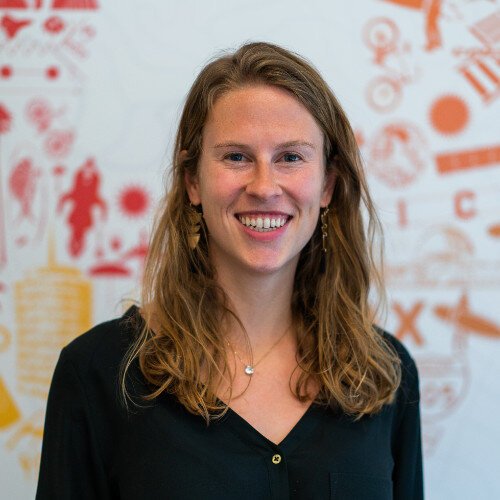UX Successes of Socially Conscious Organizations
Photo by Mauro Mora on Unsplash
DESIGN THINKING IN ACTION, by Meghan Wenzel
The benefits of positive user experiences
We are increasingly understanding the powerful benefits of good user experience (UX). The field of UX focuses on creating meaningful, relevant, and intuitive products and services. UX goes beyond visual design and thoughtfully crafts experiences, seeking to understand users’ contexts, motivations, and needs in order to create an offering that enables users to achieve their goals in an accessible and pleasing way.
A user-centered focus and design thinking will serve you well
How can you harness the benefits of UX for your organization? Adopt a user-centered focus which is at the core of UX. User-centered design (UCD) emphasizes deeply understanding your users’ unique needs and core problems in order to build a relevant and alluring solution. UCD is an iterative and ongoing process, encouraging testing and tweaking of ideas. Great solutions don’t just appear, they’re honed over time through feedback and learning.
Use design thinking to guide your creative problem solving. Design thinking focuses on finding a balance of what’s desirable from a human perspective with what’s technologically feasible and economically viable. It’s a set of tools that supports you in tackling a wide range of challenges in creative ways. It will help you understand the contexts and needs of the people you're creating for, identify new opportunities based on these needs, and develop innovative new solutions.
From here, I’ll highlight how nonprofits and others have used several key UX principles to strengthen their work and maximize their impact.
Putting it into practice
Gather inspiration and insights by observing, interviewing, and empathizing with your stakeholders
Getting to know your customers is the first step in creating products and services they want and need. Don’t assume you know what someone thinks or feels -- remember, you are not your user! Go out into your community to talk, connect, and learn from them.
Aaron Lyles, Founder & CEO of CommonAlly, was distressed by political turmoil following the 2016 election as well as overall disengagement and lack of activism in young people, the largest voting block. He quit his job at a FinTech company to focus on educating people, encouraging dialogues, and turning passion into action. He sold his house, put together a product team, and went around his community to talk with people to understand the disengagement problem more deeply and learn about others’ perspectives and experiences. During these discussions, he learned that people wanted neutral, fact-based content that allowed them to form their own opinions and they wanted to learn how they could pitch in and make an impact.
Based on this, he decided to focus on creating engaging non-partisan content that people can relate to on a genuine and digestible level. He removes opinion and objectively explains a topic or issue. “Instead of writing an article around should Trump get impeached, I’ll write about the impeachment process and make sure users understand its five steps”. He also includes how users can take action, get involved, and help solve problems within each content piece.
Author/Copyright holder: Teo Yu Siang and Interaction Design Foundation. Copyright terms and licence: CC BY-NC-SA 3.0
Generate ideas by turning problems into opportunities
Once you identify a problem to focus on, dig deeper to understand it more fully, instead of jumping into finding a solution. Consider the problem from different angles and perspectives, and frame problems as opportunities.
As COVID-19 hit, Dr. Ilan Shaprio of AltaMed Health Services and Dr. Juan Espinoza of Children's Hospital Los Angeles took a step back to understand the problem at hand and identify opportunities. How might we provide excellent medical care in spite of COVID-19? How might we better leverage technology? How might we provide more affordable, accessible, and high quality care?
Telehealth was a great answer to these questions. Since its rapid adoption during COVID-19, telehealth has lowered the barrier to accessing care. Patients no longer have to take time off work, find a babysitter, or commute to the doctor’s office, enabling them to have shorter, more focused, more effective, and more frequent conversations with doctors. They also found that telehealth paradoxically led to more intimate and authentic interactions with patients. Speaking to patients inside their homes allows doctors to better understand their living environments and family members, while allowing the patients to feel more comfortable and open up. Dr Shapiro has found “The communication is actually better - it’s more focused and more fun.”
Make your ideas tangible and test them out to gather feedback
Once you’ve developed a list of “how might we” questions, pick one or two to focus on initially. From there, brainstorm a variety of solutions and withhold judgment. The goal is to get a wide range of ideas - don’t get wedded to your first idea! Exploring and testing out a variety of ideas will help you learn the pros and cons of each.
Amit Thakkar, Founder & CEO of LawMaker, worked as a political journalist, lobbyist, and political consultant and was distressed by how much influence money held in politics. He decided to focus on educating people and encouraging legislative change. He began building an app called Politi-Score that notified users when new legislation in their community was first introduced. He provided a summary of the legislation, ways to learn more, a general legislative schedule, and how users could take action and impact the legislation.
He tested his prototyped app with a range of users. “We heard shocking news - people loved it! They said it was designed well and provided good information that they could use, however 88% wouldn’t use it because they felt like they couldn’t make any difference in the political world once they spent time educating themselves on the app. We heard things like ‘Why spend one hour learning about Iraq, when I can’t make a difference?’ or ‘My vote just doesn't matter’”. Ultimately people want to feel like they can make a difference.
From this early feedback, he pivoted to LawMaker and worked on building a micro-lobbying platform that allowed people to engage. Through the web platform, users can create new policy ideas and share them on Facebook, Twitter, or other crowdsourcing platforms. Then others can add amendments or up-vote the ideas, and then the idea owners can engage their politicians and start a conversation about the change they want to see.
Track progress over time and iteratively refine solutions
After learning from stakeholders and refining your solution, you’re ready to launch it. But your work isn’t finished. It’s important to monitor adoption, address issues as they arise, and continue improving your offering based on community feedback.
Nexleaf Analytics is promoting clean cooking by encouraging people to use more efficient and low-emission cookstoves. While many organizations disseminate clean cookstoves, they don’t take the time to ensure people actually adopt and use them. In contrast, Nexleaf works with local communities to find the best cookstove design to meet their actual needs and living conditions.
Additionally, Nexleaf continues to monitor, support, and improve their offering. They use data to gauge adoption, track ongoing usage and emission reduction, and take action if needed. If a household’s cooking behavior suddenly changes, Nexleaf’s partners will be notified, and someone will check on the household to see what’s needed. They’ve found that combining data with human contact is key in driving positive outcomes.
By adopting a user-centered mindset and involving your community throughout the product or service creation, your offering will be aligned with your community’s actual needs and preferences, leading to increased satisfaction, engagement, and impact. Use these frameworks to take your organization to the next level and better serve your community.
About the author
Meghan Wenzel is a Senior UX Researcher at Unquork, a no code software platform. Previously, Meghan founded the UX Research team at Factual, a startup focused on building tools to make data more accessible and actionable. Meghan writes UX Research focused content on Medium, as well as education, mindfulness, and neuroscience books and research briefs with The Center for Educational Improvement.



